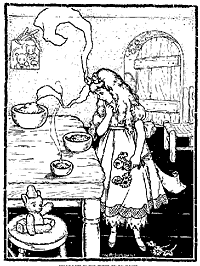
Let’s look at two instructional strategies
you can include every day in your prekindergarten
program to prepare your students for kindergarten. Retelling Stories
 Retelling is a powerful strategy for increasing
children’s vocabulary and their sense of
story and familiarity with more challenging sentence
structures. When students retell stories they
demonstrate their growing understanding of story
structure. They start with the beginning of the
story and describe the setting, list story details
in sequence, and interpret the sounds and expressions
of characters’ voices. The ability to retell
stories with well-formed narrative structures
has a strong relation to later reading achievement.
When retelling informational texts, children think
about the main things they learned and try to
explain them to others. Retelling is a powerful strategy for increasing
children’s vocabulary and their sense of
story and familiarity with more challenging sentence
structures. When students retell stories they
demonstrate their growing understanding of story
structure. They start with the beginning of the
story and describe the setting, list story details
in sequence, and interpret the sounds and expressions
of characters’ voices. The ability to retell
stories with well-formed narrative structures
has a strong relation to later reading achievement.
When retelling informational texts, children think
about the main things they learned and try to
explain them to others.
Here are some tips for encouraging your prekindergarten
students to retell stories.
- Read the story to children several times. Be
sure to discuss the story with students before
and after reading to better prepare them for
retelling.
- Provide props such as flannel boards, puppets,
masks, or key items (such as bowls and spoons
for Goldilocks and the Three Bears)
to support the retelling.
- Show children how to retell the story with props.
- Invite a child or children to retell the story for others or for you.
- Make the book and story-retelling materials
available to children during center time.
Try using the following prompts if children get
stuck while retelling a story.
- If a child has trouble getting started,
try “Once upon a time...” or “Once
there was...”
- If a child pauses before getting to the end,
try “What comes next?“ or “Then
what happened?”
- If a child stops retelling the story and
needs more specific help, try asking a question
that will remind the child about what happened
next, such as “Where did Jenny go?”
Some prompts will help children focus on the essential elements of story structure:
- “Who was the main character?”
- “Where did the story take place?”
Or “Where were they?”
- “What kind of trouble was _______ having?”
- “What happened next?”
- “How did ________ solve the problem?”
Or “How did the story end?”
Providing props and inviting children to retell
stories with repetitive dialogue, such as " Not
I, said the cat" provides additional
support to English language learners and language-delayed
students. Repetitive story lines are easier to
remember and try out, while props help provide
visual support for the meaning of the story.
Acting out stories with small groups of children
also supports the English language learner or
language-delayed student.
Interactive Read-Aloud
You will want to revisit previous sections
of this training to remind yourself of the key
steps and features of powerful interactive reading
(Unit 2, Language Section 1B). In the language
section of this training we talked about interactive
reading for promoting language development.
In the motivation section of the emergent reading
section, we talked about interactive reading
(read-alouds) as a tool for motivating children
to learn to read and building their understanding
of print concepts.
You can increase children’s listening
comprehension skills during interactive reading
when you ask questions that encourage them to
do the following:
- Make connections among the book, their
own lives, and other books that have been read
to them. For example, “Have you ever
been on a picnic? Who went? What happened?”
Or “How is this story like the book we
read yesterday?”
- Make predictions about what will happen next in the book and why. For example, “What will happen next? Why do you think that?”
- Allow them to ask their own questions about
the book. For example, “What are you wondering
about as I read this part of the book to you?”
- Discuss characters' feelings and motivations.
For example, “How is Cinderella feeling
in this part of the story?” Or “Why
did Goldilocks go in the bear’s house?”
|